The Destiny of Mankind: An Evolution of Ancient Underworlds
Featured Article
By Jess Nadeau
In the New Testament, the underworld is envisioned as a place of moral dualism. Voracious flames in a desolate void of ceaseless sorrow cast away the wicked into a realm where the worm does not die and the fire is not quenched; their fate sealed in separation from God. By contrast, the righteous are awarded a place of radiant splendor, heavenly courts where the promise of everlasting communion with the divine fulfills the deepest human desire. Opposing visions of torment and bliss profoundly shaped Western thought; yet, this Christian image of the afterlife did not emerge in isolation. It is the culmination of millennia of reflection, transformation, and adaptation. Across Mesopotamia, Egypt, Greece, and Rome, cultures wrestled with the same fundamental question: What becomes of the human, of the soul after death?
From Dust to Dust
“For dust you are and to dust you shall return.” (Genesis 3:19)
The dark and dreary world the Mesopotamians imagined, its dusty gates and palace of eternal grandeur, encapsulated a shadowy realm of neither pleasure nor pain. Offerings to the dead sustained their hungry bellies and sated their thirst. If only the murky puddles and masses of grit they were left with could do the same. So far beneath the earth, and distant from the heavens that housed the gods, there was little that awaited those who left the living. When Inanna made her way through the underworld, she was faced with its harshest reality: the order that comes in death is unwavering and unforgiving. The grief that the living endured as their loved ones passed, and the truth of their existence, only attested to their finality to return to whence they came, dust and ash. Living was all they had.
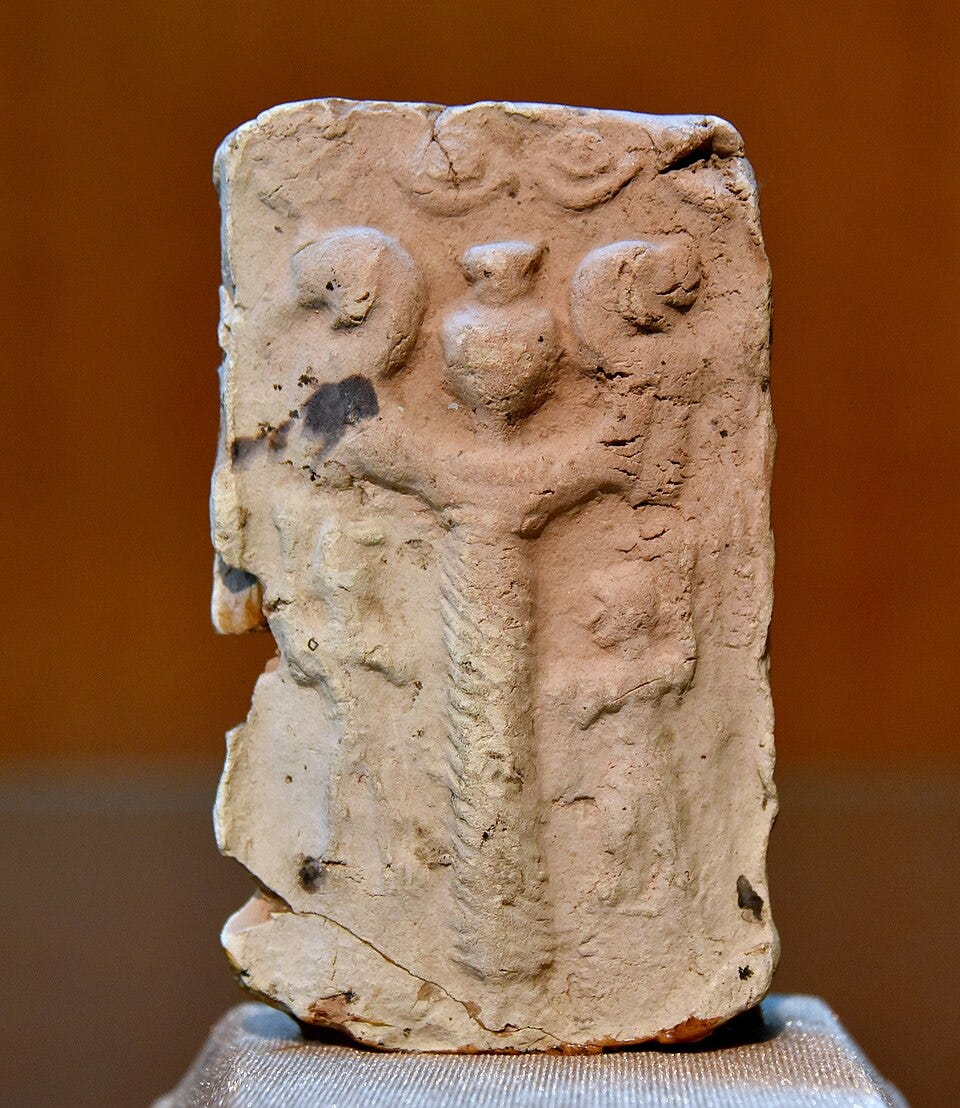
As the cradle of civilization, Mesopotamia’s reach extended far. It was a region in constant flux, the movement of people inevitable. Its dim reflection of the underworld cast a shadow over many civilizations thereafter. When the Hittites gained control of the greater region around 1400 BCE, they incorporated a vast pit to offer, sacrifice, purify, and beckon the gods of the dark abyss. Not long after, the Israelites were making their way into the Promised Land. Early conceptions of the underworld among the Israelites echo Mesopotamia’s sentiment as a cavernous house of bleak obscurity. The insatiable hunger that plagued the dead was seen in Sheol, its home and its devourer. Its mouth was like the Hittites’ enormous pits, opening up to swallow the dead with a hunger that only all of humanity could satisfy. Once in the realm of the dead, there was no escape. Like the Mesopotamians, Sheol was a cosmic opposite to the realm of God, the Promised Land. Its gates remained locked, windows to the outside forever closed, and death always stood guard, vigilant and unshaken.
The prince of this forsaken land was the accuser, the adversary, the first enemy of mankind, Satan. When the serpent that tricked Eve into eating the apple was caught by God, he banished him to the underworld, where he would spend all eternity feasting on the dirt of the grave, the same muddy feast the dead were granted. There were no punishments or rewards; it was the destiny of both the righteous and the wicked. No one could remember their God because here, he was forgotten and his praise absent. But God still had dominion over this place of lonesome souls. It was believed that one day, a messiah would come, one to strike down Sheol, and those who were lost would rise by the power of God. And with such hopes, Sheol became a liminal destination, remembered by God though he is forgotten. In some cases, God could save those as they faced the gates of their demise.
In due time, subtleties alluded to something more, communicating justice in the wake of what was long thought to be an empty and impartial afterlife, a compartmentalization of the promise of judgment. Different realms appeared: paradise, Abraham’s bosom, heaven, or the heavens for the righteous; Sheol, the Lake of Fire in Gehenna, Hades for the wicked, or Tartarus for the fallen among God. A shift began to take place, gradually moving away from the inevitable shadow in lives dedicated to and in the presence of the divine.
The Lifeless Dead
“Don’t try to reconcile me to my dying. I’d rather serve as another man’s labourer, as a poor peasant without land, and be alive on Earth, than be lord of all the lifeless dead.” (Words of Achilles. The Odyssey, Book XI. A.S. Klein)
When Homer wrote The Iliad and The Odyssey around 750 BCE, Greece was in its Dark Ages, brought on by the collapse of the Bronze Age. Worlds crumbled under the weight of catastrophe, and stories of the wonders of the past became legends. But Homer’s Odyssey did not bring about new definitions of the underworld. His was as bleak and uninviting as ever. As Odysseus, like the Hittites, dug a pit in the ground to make offerings to the dead to summon those passed on, he was met with despondency. Speaking to the great Achilles in an effort to find his way back to Ithaca and with praises of his likely place among the dead as ruler, Odysseus was only met with those woeful words.
Though Homer’s underworld was not so different than that which came before him, it would not always be that way. The greying world that Hades and Persephone reigned over would eventually evolve into differing domains based on one’s life and status. By the time of Plato, four centuries later, it was understood to contain four distinct realms. For those who lived a pleasant life and were remembered, they enjoyed the sunny meadows of the Asphodel. Warriors or those who died valiantly in battle went to Elysium. The purest of hearts found themselves in the Isle of the Blessed, and if wicked or forgotten, they roamed dolorously or in perpetual torture in Tartarus. These realms did exist during Homer’s time, but lacked clear boundaries. Rather, the souls of the dead were dependent on their remembrance, still aching for the life they once had and anguished by all that they had lost.
For the Greeks, the underworld became a place of responsibility and judgment. Through its melancholy caverns, rivers flowed: oath, woe, lamentation, forget, and fire. Their purposes guided the dead, cleansed them of their grief, or made them forget their mortal lives. They were consumed with a searing fury to keep the wicked tormented or to burn away the sins of the past. The living were held accountable to never forget the dead. Proper burial rituals were honored, food and drink offered, and memorials erected as immortal stelae depicting how they would have liked to be remembered. For the will to carry on in death or be given a second chance, memory was their savior, a glimmer of hope in the gloom of the abyss.
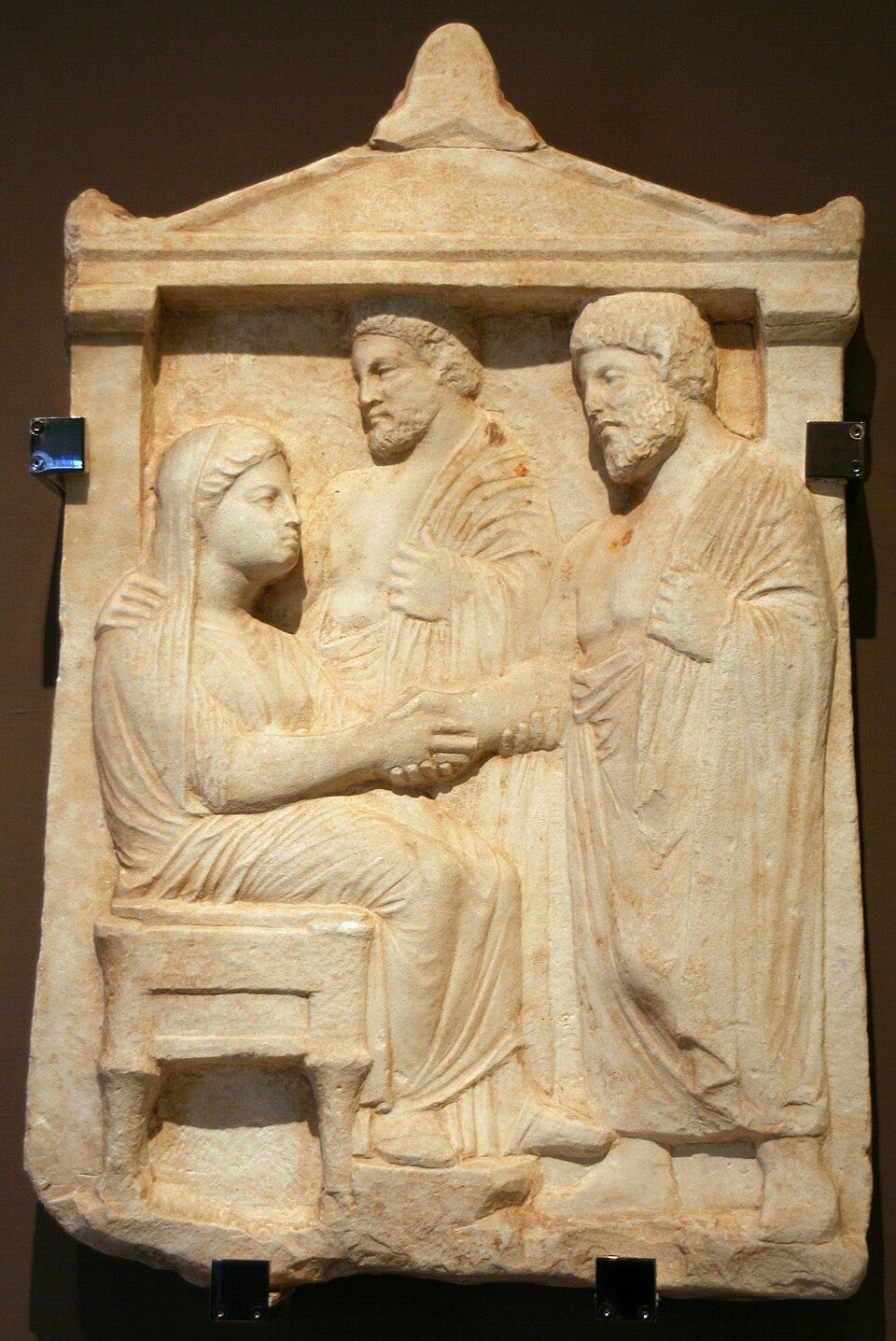
May My Soul Rest
“May I walk every day unceasing on the banks of my water, may my soul rest on the branches of the trees which I have planted, may I refresh myself in the shadow of my sycamore.” (Tomb inscription, 1400 BCE. Nardo, 10)
For the Egyptians, the underworld may have been like the world they once knew. In the Field of Reeds, there was no sickness, no sorrow, no death. It was the destination every Egyptian craved, one that could be granted to them by the Osiris. Tomb inscriptions and depictions reflect the dead flourishing amongst the things and activities they held close to their hearts. But to get there, one had to traverse a realm of peril. Their hearts could not be heavy with desire, jealousy, or self-pity. The heart was the most vital part of themselves that they could take with them. Adorned with amulets, it, along with their voice, carried them through the underworld. Met by the twelve gates of hours that Ra passes through during the night, each with its own named guardian, the dead could face numerous lurking monstrous beings of indescribable harm or a Lake of Fire that may purify or destroy them.
As the soul awoke from its destined slumber, its memories of its life were gone. A part of itself remained in the tomb, while other parts served different functions. The soul, as the Egyptians believed, was severed into five entities. The Ba could move about the world, taking flight like a bird. The Ka found itself in the underworld, alongside Ib, the seat of consciousness and emotion, the heart that would be weighed against the feather of Ma’at, order. Anubis met the dead upon their awakening; at times, it may have been Nephthys. Guided by their divine hands and with ample instructions, the dead opened their mouths and made their way to the west, land of the setting sun, and down into the Hall of Two Truths to stand before Osiris. Here, their immortal soul waited in line while being attended to by goddesses in preparation for their judgment. One by one, hearts were delicately placed on an imposing scale and weighed by Anubis. If the heart proved true to the bearer, light and full of gratitude, paradise was on the horizon. If not, a ravenous god would devour them, and they would cease to exist.
Left behind in their places of rest, offerings would be made to nourish the soul long after death: drinks, food, prayers to the gods, as well as amulets, priced trinkets, and dolls to act as servants in the afterlife. The things that were placed with the dead, whether in their tombs or burials, manifested themselves in the afterlife. A small boat built from wood could carry them across water, and games could entertain them. As such, funerary rituals, preserving the name, and the act of mummification were imperative in the survival of those passed on. Similar to the Mesopotamians, Israelites, and Greeks, death was fated, inescapable. However, the Egyptians did not envision it as desolation. They saw in death the continuation of existence, a path carefully traveled and just in every way.
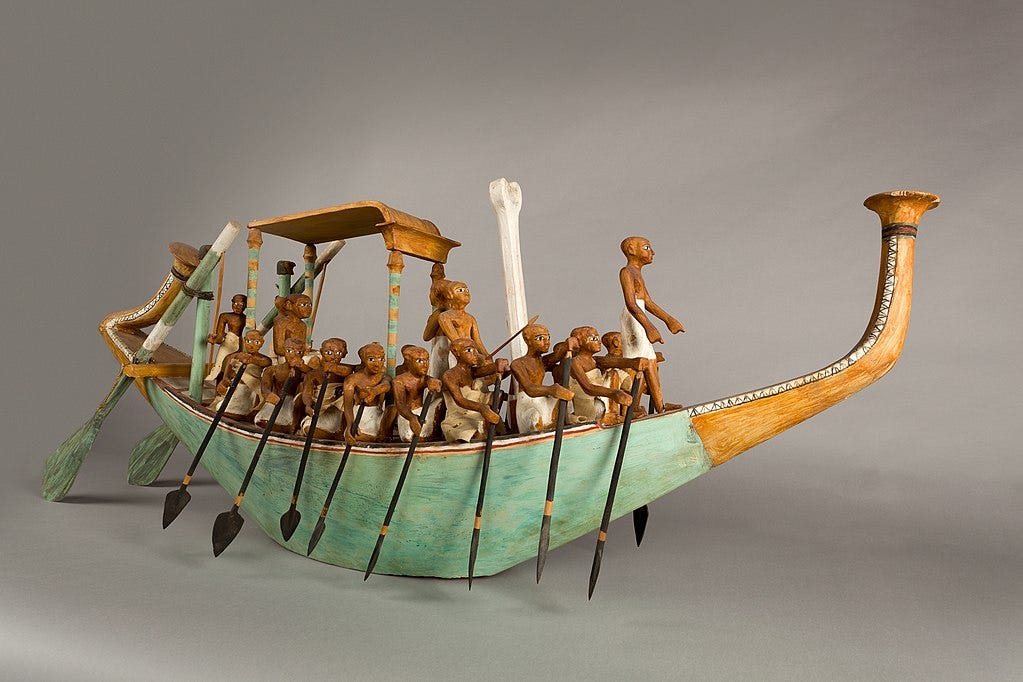
The first inclination of the Egyptian underworld comes from the Pyramid Texts, dating around 2400 BCE, as one of the oldest conceptions of the underworld. Coffin Texts soon followed, and later, the Book of Coming Forth by Day, otherwise known as the Book of the Dead. These texts meticulously outlined the underworld and helped the dead to remember. Spells, incantations, directions, names of gods, and maps eased their uncertainties and gave them all the strength they needed to overcome their arduous journey. Rebirth, justice, and the divine order of the cosmos were their end and their beginning. For all the emptiness that lingered in other regions with the thought of death, the Egyptians lived their lives to honor themselves and those they loved, to live on in bliss, and to be rewarded for their gratitude.
No More Mourning or Sadness or Pain
“He will wipe away all tears from their eyes; there will be no more death, and no more mourning or sadness or pain. The world of the past has gone.” (Revelation 21:4)
By the time Virgil’s Aeneid was written, between 29 and 19 BCE, the underworld had transformed into a complex system of reward and punishment. The Romans had taken what the Greeks provided and infused it with their own societal values and laws. Cultural virtues enabled enteral glory, while strict punishments reflected moral obligations. It had become a practical and just continuation of life on earth. Similar to the Greeks, the Romans had compartmentalized their underworld. Limbo held the forgotten, infants, suicides, and those who died an untimely death or were not afforded proper rituals. The Fields of Mourning was something close to the original Hades, bleak with regret, loss, and unfulfilled dreams and aspirations. The Asphodel remained a place for the commoner, quaint and sufficient. Elysium and the Isle of the Blessed were reserved for the brave and virtuous, and Tartarus for the vilest of humanity, a place of damnation.
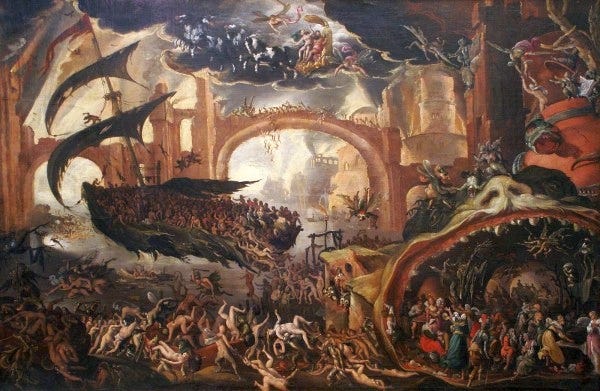
As the Roman Empire expanded, so too did Judaism and soon Christianity. By the mid-1st century CE, messages had spread throughout the empire, and Christianity took root. Its underworld evolved into what it is envisioned today. As perfect opposites, heaven and hell house the good and the evil, separate realms that embody a justified continuation. Migration, expansion, and trade facilitated inventive ways to understand death and its place in the great cosmos of existence. Death became more than a resting place; it allowed for lasting worship, unlike its predecessors. Perhaps, it gave unbroken reason to worship, honor the dead, and act with morality. As a god who welcomes his people into his paradise rather than condemning them to emptiness, he, like Osiris, takes away their pain, their suffering, and gently guides them into his illumination.
In truth, ancient underworlds had always functioned as moral compasses, enforcing societal norms and beliefs, and gave structure and reason to the natural cycles of the world. The ways in which they were conceptualized related to their relationships to their god(s) and encouraged familial responsibilities to protect each other in death. For early civilizations, the most a person could expect was to live in the presence of divinity. Later understandings must have recognized the benefit in translating death as a continuation of life, a rebirth not in the literal sense, but as an outcome of the judgment processes that held their societies together.
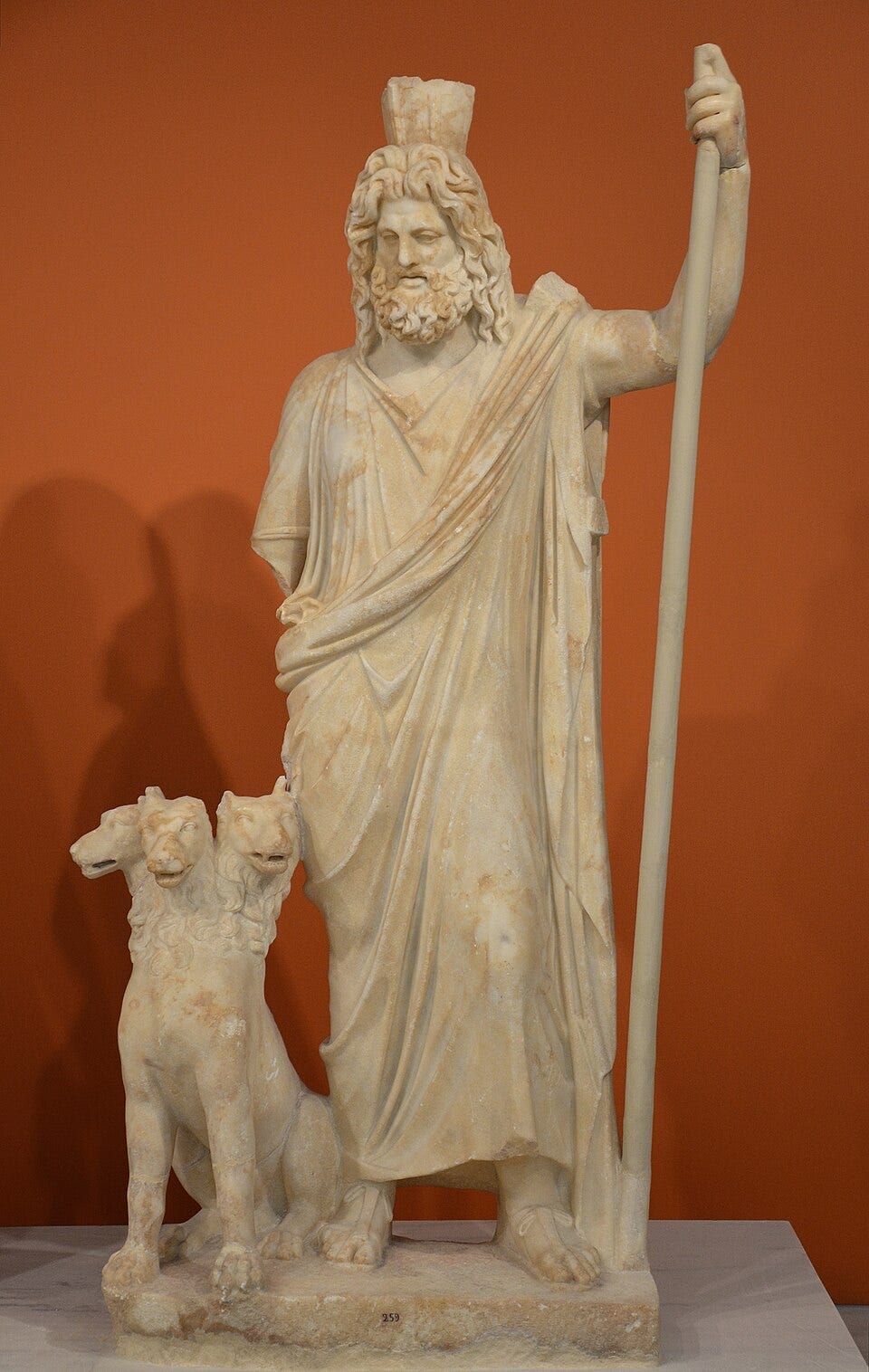
The Immortal Soul
"I am fully convinced that the soul is indestructible, and that its activity will continue through eternity. It is like the sun, which, to our eyes, seems to set in night; but it has in reality only gone to diffuse its light elsewhere". (Johann Wolfgang von Goethe, 1749-1832)
Undoubtedly, ancient civilizations gradually influenced one another, building upon preexisting foundations in unique ways that fostered loyalty. What is more intriguing, however, is the similarities they share not from influence alone but from the innate construction of underworld symbolic motifs. It is well-attested that early humans buried or burned their dead. The reasoning behind this may have more to do with sanitation and preventing animals from scavenging, yet it demonstrates symbolic representations of the underworld being deep below the earth and the concept of returning to dust, dirt.
As such, there are age-old associations with caves as entrances or abodes. The cavernous nature of the cave, its seemingly infinite passageways, as well as its absence of any natural light, allude to a transition between life and death, light and dark, as a sort of liminal space full of eerie and otherworldly sensations. In many cultures, caves are considered to be the Womb of Mother Earth, connected to fertility and rebirth, signified by Jesus rising from the dead in his cave-like tomb. Additionally, caves have long been used as a source of shelter, water, and agriculture. Archaeologists have, on a few occasions, also uncovered evidence that suggests the use of caves for burial rituals going back to Neolithic humans and distant relatives of Homo sapiens. Having such a multifaceted relationship with caves, it is no surprise that the underworlds of the early ancients, their pits of offering, and the tombs of later generations replicate the cave. The deeper one travels, the further away from life they become.
Much like caves, water also has symbolic significance to the underworld. The river that flowed through the entrance of Hades represented a boundary between the living and the dead. Other waters, like those of forget, woe, and lamentation, served purposes that reflect the death experience and the agreements made by the dead to their gods. The recurring motif of a lake of fire found in ancient Egyptian texts as well as biblical texts, as both a punishment and purification source, further reinforces the oath one takes in death and the duties of the living to protect themselves and others from an unfortunate fate through faith and obligation. Further, these waters were part of the mythical origin of the cosmos as an aquatic abyss, one that gave birth to all things, hence a passage into new beginnings, a new state of being. Agricultural cycles, like the cycles of Nile inundation that the Egyptians were so dependent on for their survival, were also intimately bound with life and death. And the vastness of the sea as a barrier between the known and unknown world was a treacherous obstacle in the lives of the ancients, effortlessly providing for and taking away life.
The underworld was a place of no return, where one goes and cannot be brought back. Although some have tried, there remains the reinforcing belief that death is eternal and rarely bends its will to anyone. They forget their past lives, are hidden away behind the gates of death’s kingdom, and knowledge is kept secret. Ereshkigal, the Queen of the Mesopotamian underworld, kept secret knowledge hidden from the dead. This idea, that there are mysteries within the underworld that neither the living nor the dead have access to, reveals how very little people truly knew of what happens after death. Understandably, there really is no way to know for certain, which gives the impression that there must be something hidden therein, something secret and unknowable, stored away and kept from humans by divinity. In this ambiguity, the living try to comfort the dead by providing them with earthly luxuries and sustenance to ease the uneasiness of themselves and those who had passed amongst an abstract transition that is both permanent and hazy.
Intrinsically, the underworld reflects human experience. The creatures that emerge from the ground become monsters, the scorching devastation of the sun upon crops, or the explosive power of the volcano becomes death’s foreboding hand over those who break the laws of the living. The waters of the sea or cavernous passageways become transitional points. And the life-giving rays that poke through billowing clouds or the limitless lights that guide and shine down at night become a paradise for the gods and those who abide by the laws of its people. Fears, famine, war, disaster, and glimmers of hope are perpetuated in visions of the underworld. It is simply within the act of observation that has shaped how the ancients perceived life and death, and the earth, in all its regenerative capabilities, provided the perfect canvas to do so. That is why the underworld holds its own strange beauty: it bestows upon mortals an immortal soul and a worthy place within the cosmos. As the sun moves across the heavens, so too does existence descend, transform, and rise anew, like a flower’s bloom breaking forth after a long, shadowy winter.
Featured image: Dante and Virgil in Hell, also known as The Barque of Dante by Eugène Delacroix ca. 1822 (Public Domain).
References
Choksi, M. 2014. Ancient Mesopotamian Beliefs in the Afterlife. World History Encyclopedia. Available at: https://www.worldhistory.org/article/701/ancient-mesopotamian-beliefs-in-the-afterlife/
Emerson, M. Y. 2020. What is Sheol? Exploring the Afterlife in the Old Testament. Desiring God. Available at: https://www.desiringgod.org/articles/what-is-sheol
Mark, J.J. 2012. The After-Life in Ancient Greece. World History Encyclopedia. Available at: https://www.worldhistory.org/article/29/the-after-life-in-ancient-greece/
Homer, translated by Kline, A.S. 2004. Homer: The Odyssey Book XI. Poetry in Translation. Available at: https://www.poetryintranslation.com/PITBR/Greek/Odyssey11.php
Virgil, translated by Kline, A.S. 2002. The Aeneid Book VI. Poetry in Translation. Available at: https://www.poetryintranslation.com/PITBR/Latin/VirgilAeneidVI.php
Ngo-Trong, S. 2022. 6 Common Themes Found in Underworld Myths from Around the World. Chasing Gods. Available at: https://chasinggods.com/6-common-themes-found-in-underworld-myths/
Old Testament and New Testament texts available at: https://www.catholic.org/bible/old_testament.php



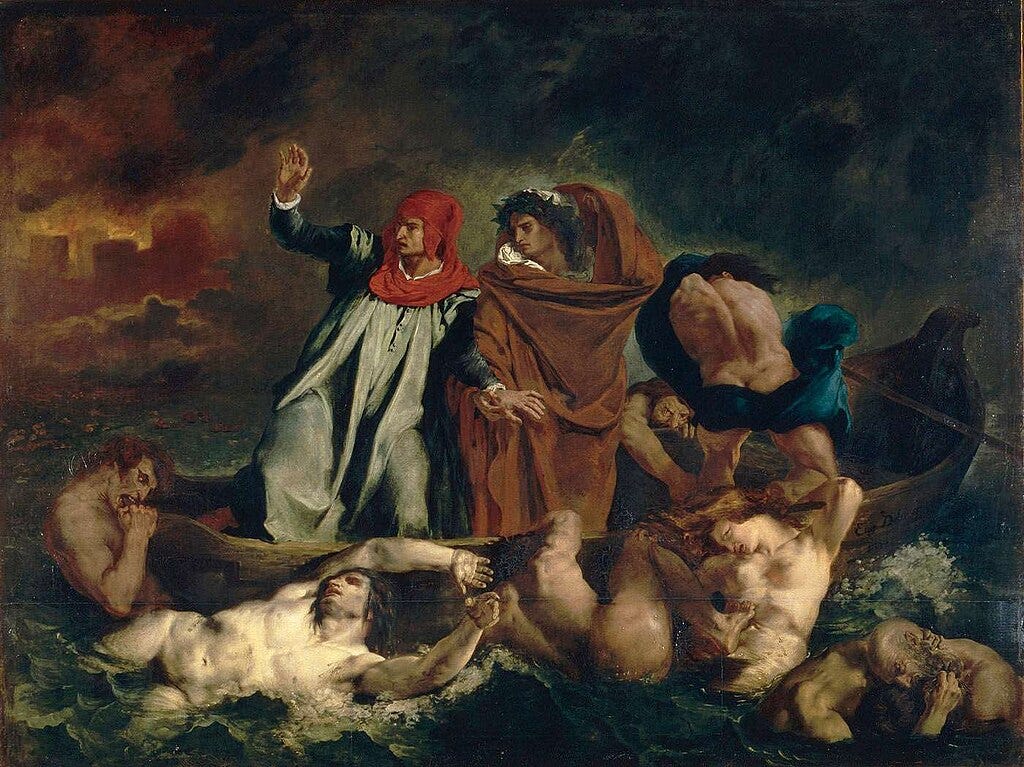

A really entertaining and informative article, thank you so much!